Let the wailing and gnashing of teeth begin.
Within the first two weeks of the ongoing government shutdown, agency heads reportedly sent permanent layoff notices to about 4,000 federal employees under the guidance of Director of the Office of Management and Budget Russ Vought. But compared to the private sector, this is a proverbial drop in the bucket.
The partial lapse in government funding has dragged on for 27 days now as Senate Majority Leader Chuck Schumer, D-N.Y., and 44 other senators continue to block the “clean” government funding measure that the House passed in September.
As a result of the funding lapse, Vought says that 10,000 federal employees could ultimately face permanent layoffs.
For context, a reduction in force of 10,000 would only amount to about 0.3% of the roughly 3-million-person federal civilian workforce.
For further context, about 0.3% of the private sector workforce faces layoffs and discharges every week!
The comparatively small size of the reductions in the federal workforce hasn’t stopped the legacy media from lamenting the supposed cruelty of these “mass layoffs.”
The same media would take little notice if a construction firm laid off half of its workforce or if a small retailer went out of business and was forced to terminate all its employees. The press ignores these situations or treats them as commonplace because—well—they are quite common.
Between 2001 and 2024, private-sector employers laid off or discharged employees a whopping 520 million times.
Last year, private-sector layoffs and discharges occurred at a rate of about one for every seven workers.
In contrast, the government laid off or discharged only about one out of every 47 federal workers.
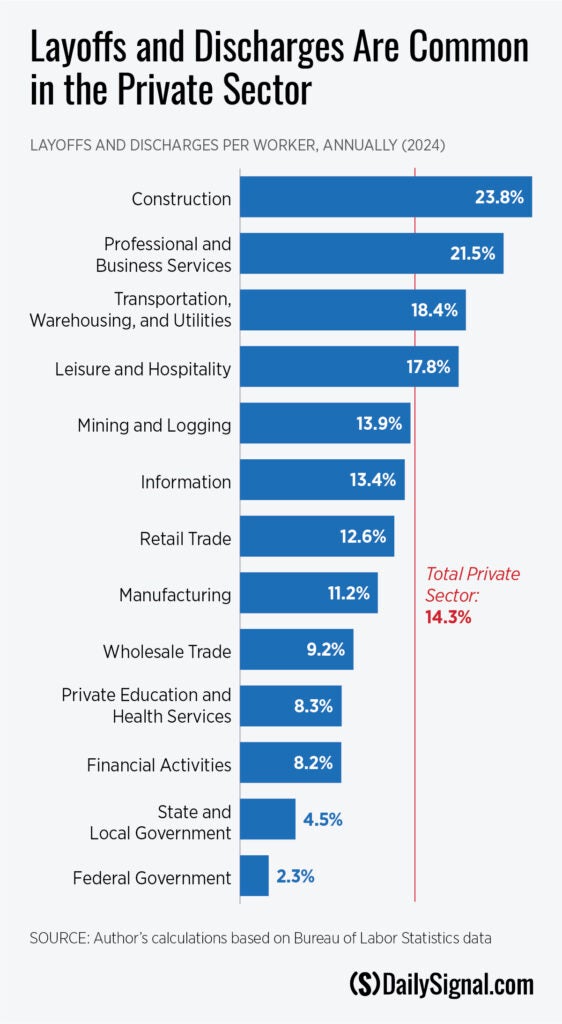
Bureau of Labor Statistics data show that no major private industry has anything like the job security that American taxpayers have provided federal workers.
Workers in manufacturing were five times more likely to lose their jobs last year than federal workers. Workers in construction were 10 times more likely to lose their jobs.
But even these statistics understate the level of job security of the more than 2 million federal civilian employees who comprise the protected civil services.
The Civil Service Reform Act of 1978 created a massive bureaucracy to impede agency heads from firing or laying off these protected federal workers. Protected workers can only be demoted or removed with cause or if it’s established that such action would enhance agency efficiency.
Federal workers must receive 60-day advance notice of such dismissals or adverse actions and can appeal to numerous boards that can overturn the actions. While these appeals are often unsuccessful, each case can take substantial time and energy, which makes managers less inclined to terminate civil servants’ employment except in the most egregious cases.
The Office of Personnel and Management reports data on worker separations in most federal agencies, especially those that are heavily staffed with such career civil servants. Out of about 2.2 million federal employees who began fiscal year 2023 in those agencies, the Office of Personnel and Management reported that only 12,804 (0.6%) were terminated for disciplinary or performance reasons and only 51 were laid off (0.002%).
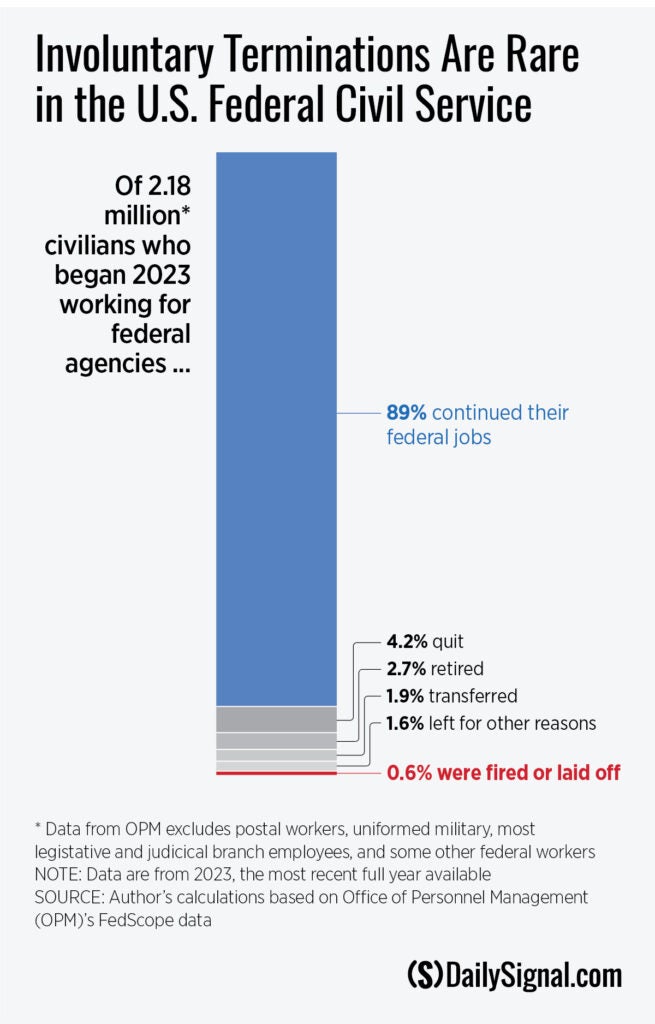
Not only have federal workers enjoyed remarkable job security, they also receive generous compensation. The median annual salary of federal employees covered in the Office of Personnel and Management data is about $100,000—more than 60% higher than the median for full-time private sector workers.
There are certainly some deserving civil servants helping the executive branch to fulfill constitutionally appropriate functions, but the current system treats almost everyone as though they are top performers.
Given their job security and lucrative pay (and benefits), it’s no wonder that the average federal civil servant has worked for the government for 11.8 years, more than four times longer than the average job tenure for private sector employees.
This imbalance between the work conditions of federal employees versus workers in the productive economy isn’t just unfair or an example of poor stewardship of taxpayer dollars. This imbalance—if unaddressed—spells trouble for the dynamism of the American economy.
In his classic work “Democracy in America,” the insightful Alexis de Tocqueville spoke about the industriousness of the American people during his time visiting America in the 1830s.
Tocqueville wrote that the American “either endeavors to get rich by commerce or industry or buys land in the bush and turns pioneer.”
In contrast, Tocqueville said for Europeans of the period, “The first thing that occurs to him is to get some public employment.”
In these centralized European monarchies where “the number of paid offices is immense, and the tenure of them tolerably secure,” Tocqueville wrote that “to relieve their own necessities at the cost of the public treasury appears to [Europeans] the easiest and most open, if not the only, way to rise above a condition which no longer contents them.”
Countries where droves of young people aspire to a career in government are doomed to stagnation.
America would never have risen from obscurity to become the most prosperous country on earth if Washington, Jefferson, and Madison had set up a political and economic system in which the populace viewed bountiful government jobs as the ticket to their success.
Unlike most other administrations dating back to Franklin Roosevelt, the Trump administration hasn’t acted as though federal workers are entitled to comfortable employment on the taxpayer dime.
But the legal and regulatory roadblocks the administration faces in restoring a proper balance to the federal workforce are substantial.
To reduce the federal workforce without running afoul of America’s overly generous civil service protections, in February, the Trump administration’s Department of Government Efficiency offered to pay many federal workers through the end of September if they would voluntarily resign. An estimated 154,000 federal workers ultimately took a buyout, and federal payrolls are now a little lighter as a result.
But ultimately, Congress must follow through on what the administration started. It must reject efforts by the Left to increase appropriations beyond last year’s already-too-high levels.
And Congress should pass legislation to unwind some of the excessive civil service protections that make federal jobs almost untouchable.
In the private sector, workers must make themselves indispensable if they want job security. It’s time to expect the same of career federal workers, so that they are more like civil servants and less like civil overlords.
The post Federal Employment Shouldn’t Be a Ticket to Lifetime Job Security appeared first on The Daily Signal.
.png)

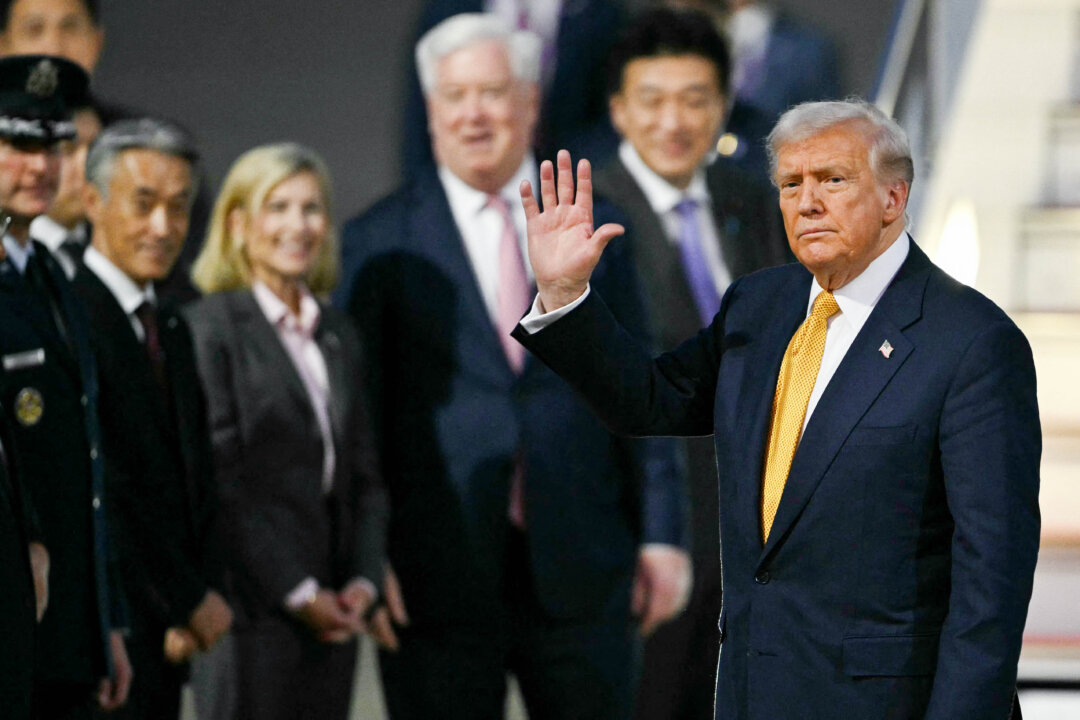

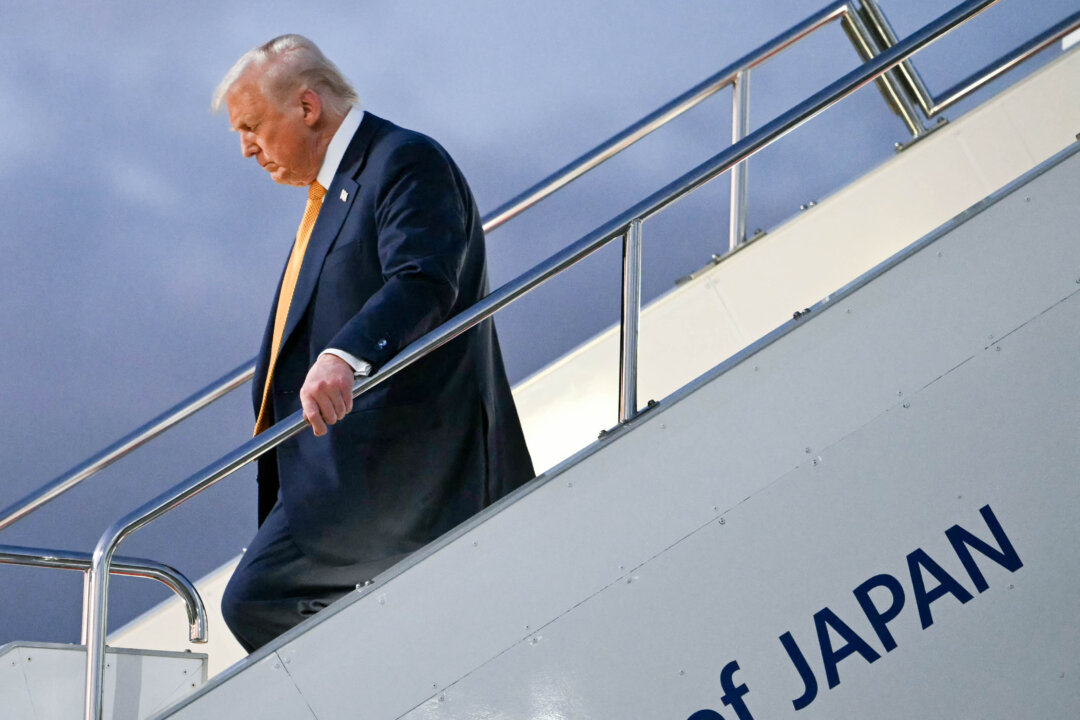





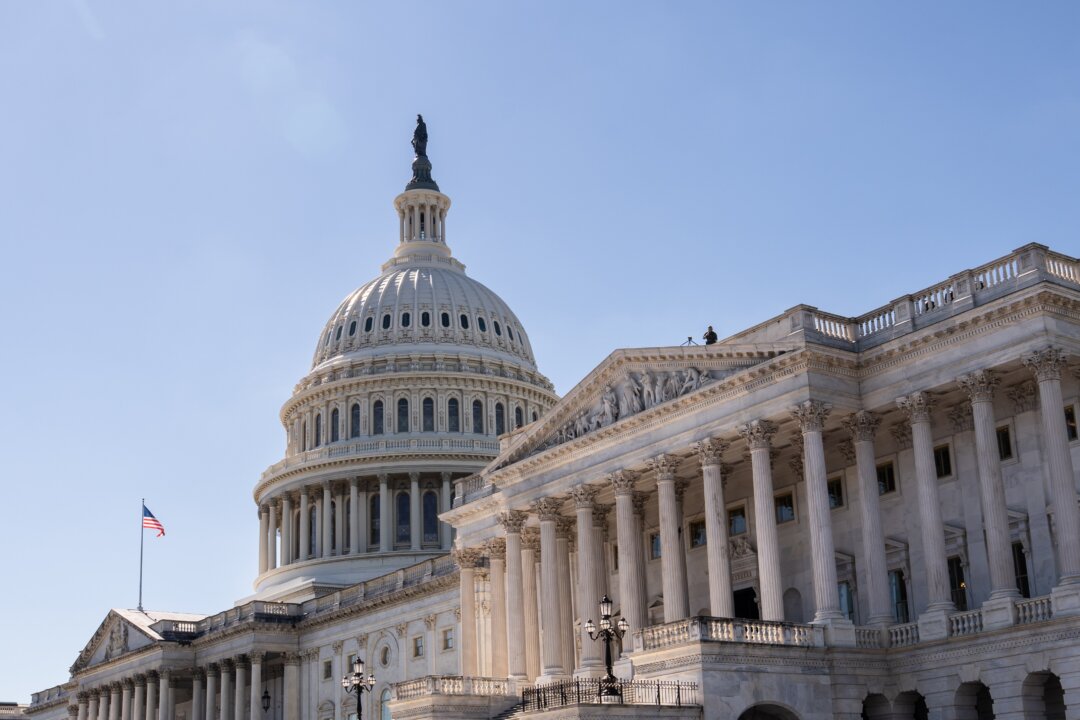




 English (US)
English (US)